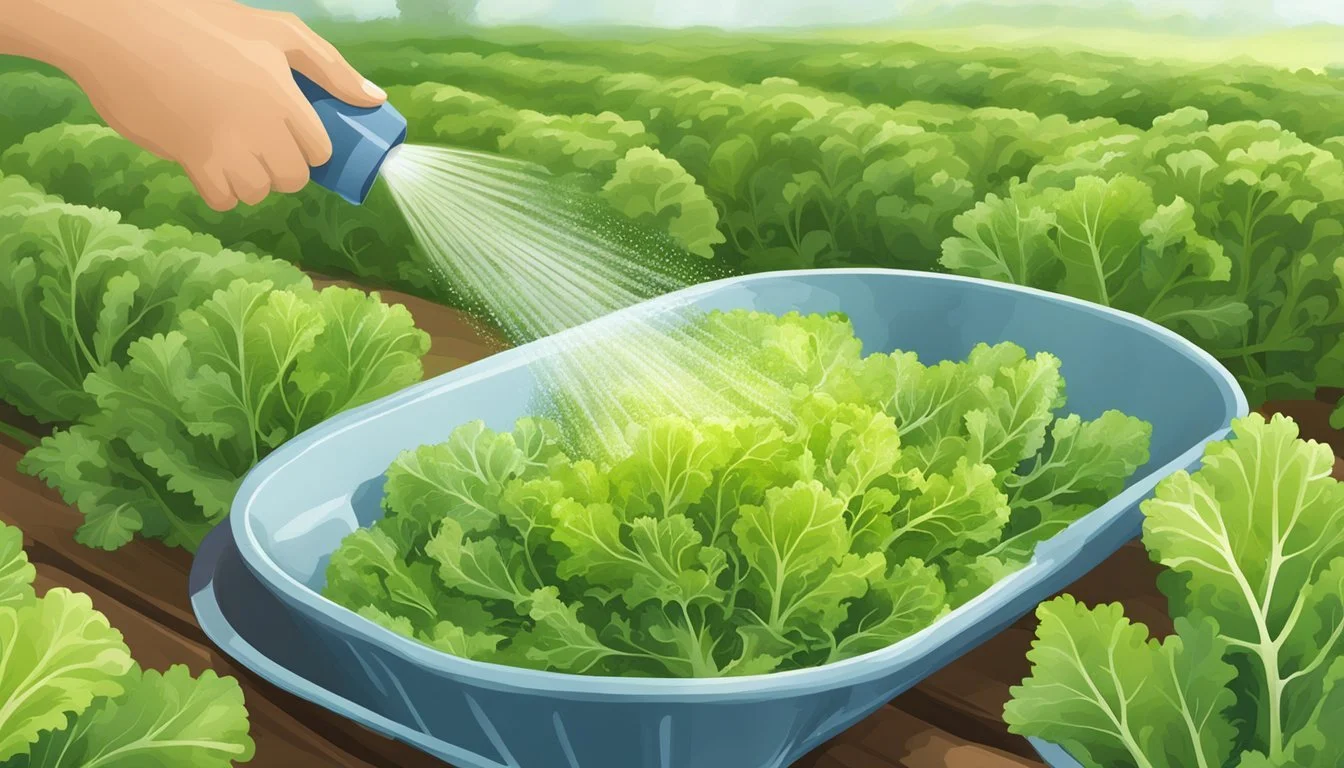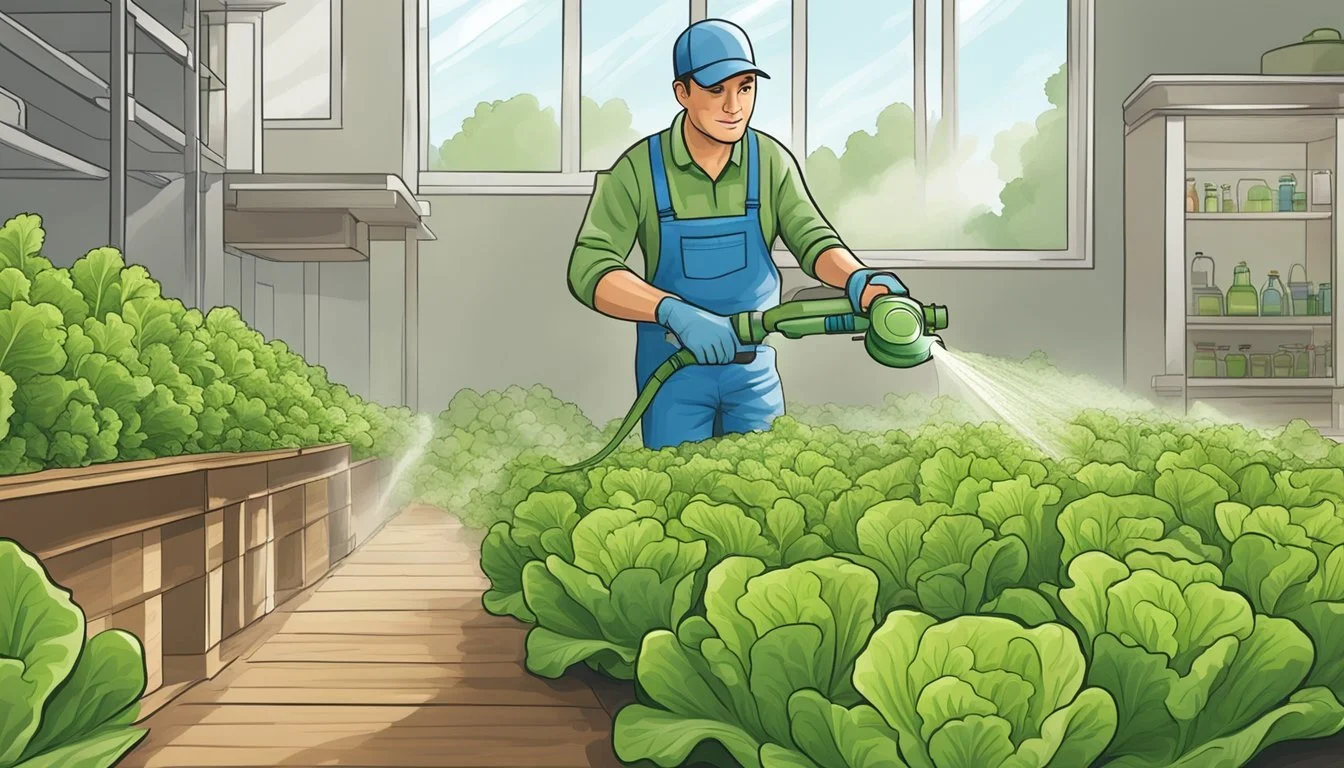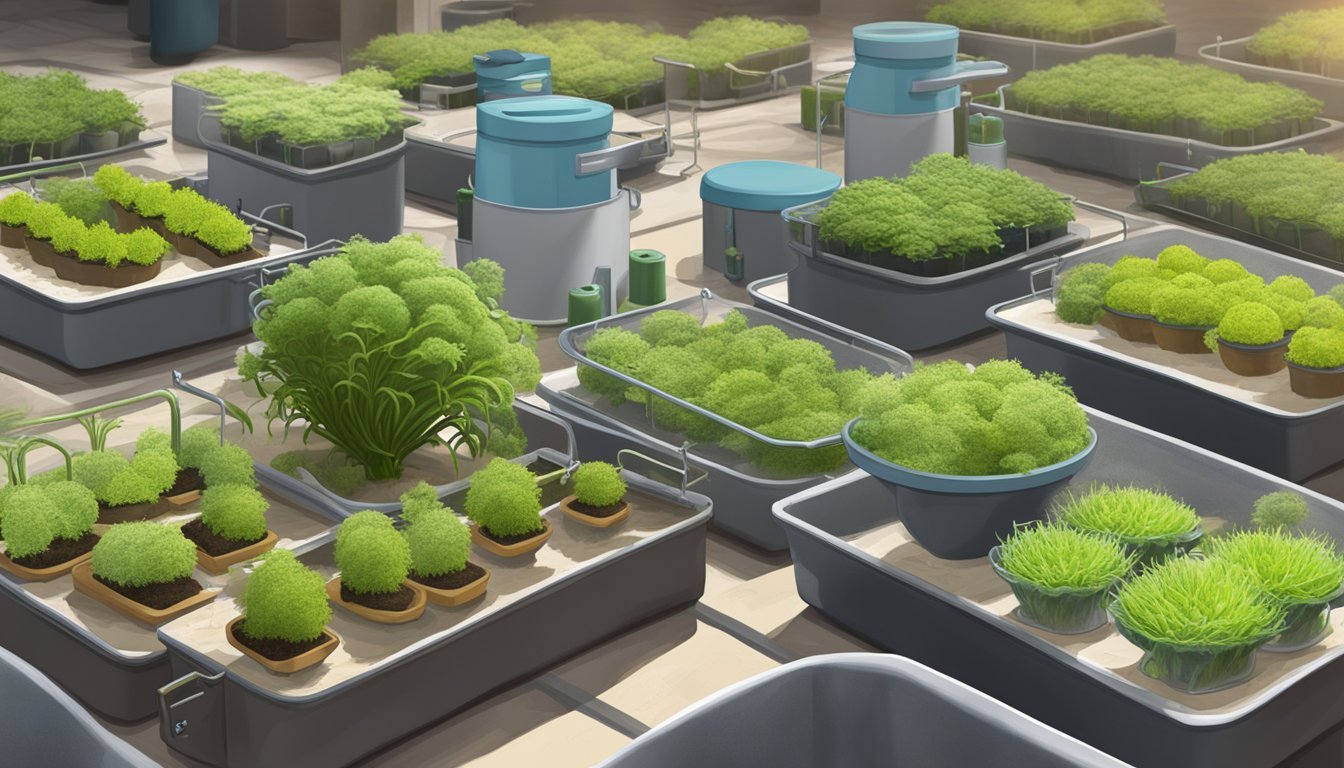Pest Control for Frisée
Effective Strategies for Your Garden
Pest control is a crucial aspect of maintaining a healthy and comfortable home, particularly when it comes to protecting delicate produce like frisée. This curly variety of endive is renowned for its slightly bitter taste and crisp texture, which makes it a popular ingredient in sophisticated salads. However, its intricate leaves also provide ample hiding spots for pests such as aphids, slugs, and snails, which can compromise the plant's vitality and the cleanliness of a home's garden space.
Implementing effective pest control measures can ensure frisée is grown to its optimum quality without the interference of unwanted guests. For homeowners looking to safeguard their produce, it becomes essential to adopt a strategy that is both targeted and environmentally friendly. Companies specializing in pest control understand the need for specialized treatments, offering tailored solutions to protect frisée from common pests while maintaining a safe environment for the household and the plant itself.
As with most aspects of home gardening and pest management, prevention is better than cure. By integrating preventative pest control practices, homeowners can reduce the likelihood of infestation and the subsequent need for intervention. This might include periodic inspections of the frisée and surrounding area, along with the use of natural deterrents and barriers to keep pests at bay. With professional guidance and diligent care, one can enjoy a thriving garden that enhances both the aesthetics and the culinary offerings of the home.
Understanding Pest Control for Frisée
Friseé, a type of chicory, is known for its frilly, tender leaves often used in salads. Like any other crop, it can become host to various pests, making pest control an important aspect to ensure the health and quality of the greens.
Common Pests in Frisée Gardens
Friseé gardens can be affected by a range of pests, including insects like aphids, caterpillars, thrips, and whiteflies. These pests not only affect the health of the plants but can also make the greens less appealing for consumption. Rodents and slugs may also pose a threat to friseé by feeding on the leaves and roots.
Integrated Pest Management Techniques
Integrated Pest Management (IPM) techniques involve a combination of methods to control pests in the most environmentally friendly way. This approach emphasizes prevention, using methods like:
Physical barriers: Nets or row covers to prevent pests from reaching the plants.
Cultural practices: Crop rotation and maintaining plant health to resist pests naturally.
Biological control: Encouraging beneficial insects that prey on friseé pests.
Chemical control: Applying pesticides as a last resort, and selecting ones that are least harmful to the environment and non-target organisms.
Significance of Regular Inspection
A key to successful pest management in friseé cultivation is regular inspection. Inspecting the crops frequently for signs of pests can help identify a problem early, making it easier to manage. IPM places importance on monitoring to detect pests before they reach a level where they might cause an infestation. Caulking and sealing potential entry points can also serve as a preventative measure to stop pests from entering the area where friseé is grown.
Professional Pest Control Services
When selecting professional pest control services, homeowners must consider the company's track record, expertise of the technicians, and ability to provide customized treatment plans. The right company should offer strong service guarantees and demonstrate commitment to customer care.
Evaluating Pest Control Companies
Choosing the right pest control company involves careful consideration of trained technicians and company reputation. Customers should look for pest control services with positive customer reviews. Companies like Terminix and Orkin stand out due to their longstanding history of quality service. Prospective clients can usually get a quote online or schedule a free inspection to start the evaluation process.
Customized Treatment Plans
A key differentiator among pest control providers is the ability to deliver personalized and customized plans tailored to unique situations. Both Terminix and Orkin highlight their use of local Orkin Pros or exterminators who are well-versed in area-specific pest challenges. A treatment plan should not be one-size-fits-all; instead, it should address the specific types of pests and levels of infestation in the home.
Service Guarantees and Customer Care
Reliable pest control services often include service guarantees. For example, Orkin offers a 30-day money back guarantee, expressing their confidence in their treatment's effectiveness. Similarly, the Terminix difference includes a focus on customer satisfaction, with various guarantees designed to instill confidence in their service. An emphasis on customer service ensures that any issues are promptly addressed, reflecting the company’s commitment to their customers' peace of mind.
Pest Control Costs and Considerations
When considering pest control, homeowners should focus on the financial implications and the efficacy of treatments offered. These factors are vital in ensuring that pest control measures are both cost-effective and successful in addressing their specific situation.
Estimating Pest Control Expenses
Estimating the expenses for pest control involves a thorough evaluation of the infestation's extent and the frequency of required treatments. Homeowners should anticipate higher costs for severe infestations, as these often necessitate off-schedule return visits and more intensive treatments. On average, a typical homeowner might spend around $450 for general pest control, but specific treatments such as for termites may average higher, around $575.
Initial Inspection and Treatment: Expect fees ranging from $150 to $300.
Monthly Visit Costs: These can range from $40 to $75 per visit.
Year-round Contracts: Often cost less per visit compared to one-time treatments.
Termite treatments and year-round control efforts, in particular, may require larger financial investment but provide more comprehensive solutions to pervasive pest issues. For accurate pricing, homeowners are advised to get a quote that takes into account their unique situation.
Optimizing Treatments for Affordability
To manage costs effectively, homeowners should seek tailored solutions that align with their specific pest situation. This often involves custom treatments rather than one-size-fits-all approaches. By focusing on custom solutions, they can avoid unnecessary expenses on ineffective treatments.
Consider Eco-Friendly Options: They can be more cost-effective in the long-term.
Evaluate Treatment Frequency: Opt for a treatment plan that balances cost with effectiveness.
Negotiate Return Visits: Some companies may offer discounts on return visits if not initially scheduled.
It's essential for homeowners to communicate with pest control providers about the nature of the infestation to ensure the treatment plan is optimized for both cost and effectiveness. Affordability can often be achieved through smart planning and understanding the pricing structures of services offered.
Preventive Strategies and Home Maintenance
Effective pest control involves not only addressing current infestations but also preventing future problems. This requires a dual approach: sealing off entry points and creating environments that are inhospitable to pests. Homeowners and Orkin professionals alike can achieve peace of mind through personalized prevention strategies that address the unique needs of their frisée gardens.
Home Sealing Techniques
The first line of defense against pests is to seal any potential entry points. This can be achieved by:
Inspecting: Carefully inspect the home for cracks, holes, and gaps, especially around windows, doors, and utility entry points.
Caulking: Use caulk to fill in small crevices and gaps. It's imperative to check older caulking and replace it if it has deteriorated.
Weatherstripping: Apply weatherstripping to doors and windows to close off the larger gaps that could allow pests to enter.
Creating Unfavorable Conditions for Pests
To prevent a pest problem, one must create an environment that discourages their presence, including:
Cleanliness: Regular cleaning helps eliminate food sources and reduces pest attraction. This involves wiping down surfaces and vacuuming frequently.
Maintenance: Proper home and garden maintenance, such as removing yard waste and standing water, reduces shelter and breeding sites for pests.
Storage: Store food, especially seeds and bulbs of the frisée plant, in sealed containers to prevent access by rodents and insects.
By incorporating these preventative measures, homeowners contribute to the prevention of future pest problems while maintaining their frisée gardens effectively.
Community and Environmental Health
Engaging community health and environmental well-being involves implementing pest control strategies that are both effective and considerate of shared spaces and ecosystems. Vital to these methods are advanced technologies and integrated pest management techniques that prioritize community health and ecological balance.
Pest Control in Shared Spaces
In shared community environments such as parks, schools, and community gardens, the presence of pests poses health risks and nuisances. Utilizing integrated pest management (IPM) techniques ensures that pest problems are managed in a way that minimizes potential health risks. Strategies include regular monitoring, biological control methods such as the introduction of natural predators, and structural improvements to reduce pest breeding grounds.
Eco-Friendly Pest Control Practices
Eco-friendly pest control practices harness advanced technology to lessen environmental impact and enhance community health. Aiming for sustainable outcomes, these methods include:
Biological Controls: Introducing natural predators or parasites to control pest populations.
Mechanical Controls: Physical barriers such as insect nets or traps.
Cultural Controls: Crop rotation and selection of pest-resistant frisée varieties.
Chemical Controls: If necessary, application of pesticides that are targeted, low-toxicity, and used as a last resort following strict guidelines.
These practices prioritize the health of the community and maintain the balance of local ecosystems by reducing the reliance on chemical treatments that can lead to adverse effects for both the environment and human health.
Frequently Asked Questions
Successful frisée cultivation hinges on effective pest management strategies. Here, find expert answers to common questions regarding the safeguarding of your frisée crop from unwanted pests.
What methods can I use to manage pests in frisée cultivation?
Crop rotation and the use of beneficial insects are viable methods to manage pests in frisée cultivation. Establishing barriers and applying pesticides when necessary can also contribute to pest management.
How can I prevent pest infestations in my frisée garden?
Preventive measures like choosing disease-resistant plant varieties, maintaining garden cleanliness, and monitoring for pests regularly can help prevent infestations in a frisée garden.
Can you recommend organic pest control solutions for frisée?
Organic solutions such as neem oil, insecticidal soaps, and diatomaceous earth are recommended for frisée. These products control pests without the use of synthetic chemicals.
What are the benefits of using Integrated Pest Management (IPM) for growing frisée?
Integrated Pest Management (IPM) involves minimizing pesticide use and combining various management strategies for growing frisée. IPM benefits include reduced pesticide resistance and less environmental impact.
How often should I inspect my frisée plants for signs of pest activity?
Regular inspections, ideally weekly, can detect early signs of pest activity, allowing for timely interventions to protect frisée plants.
What are some environmentally friendly pesticides suitable for frisée?
Environmentally friendly pesticides include biopesticides derived from natural materials, such as microorganisms and pheromones, which are suitable for frisée cultivation.








